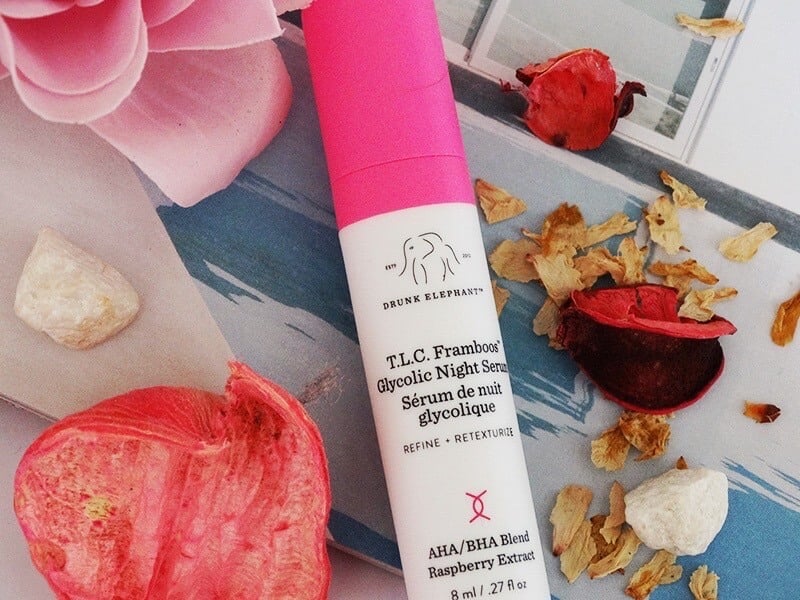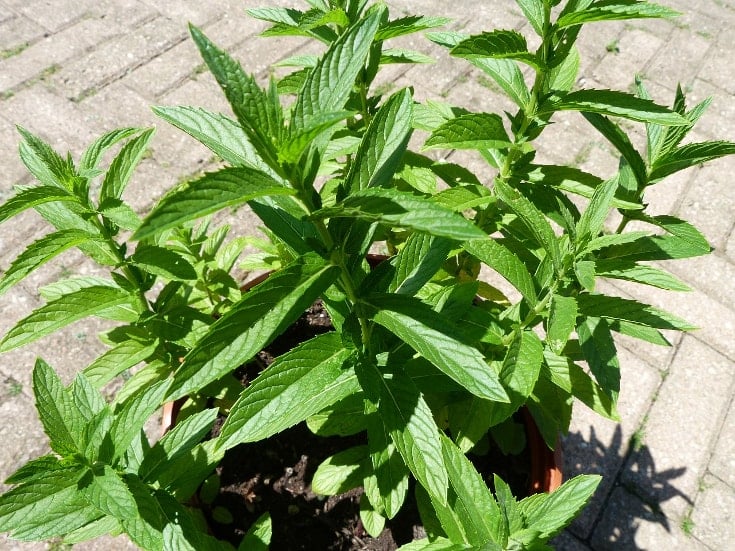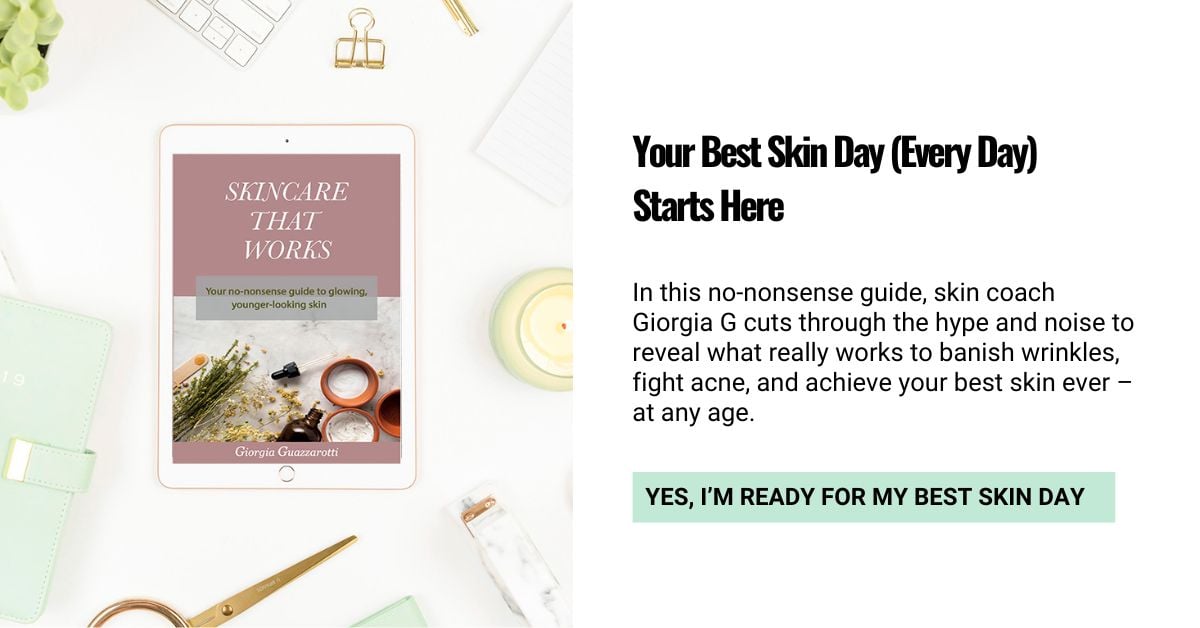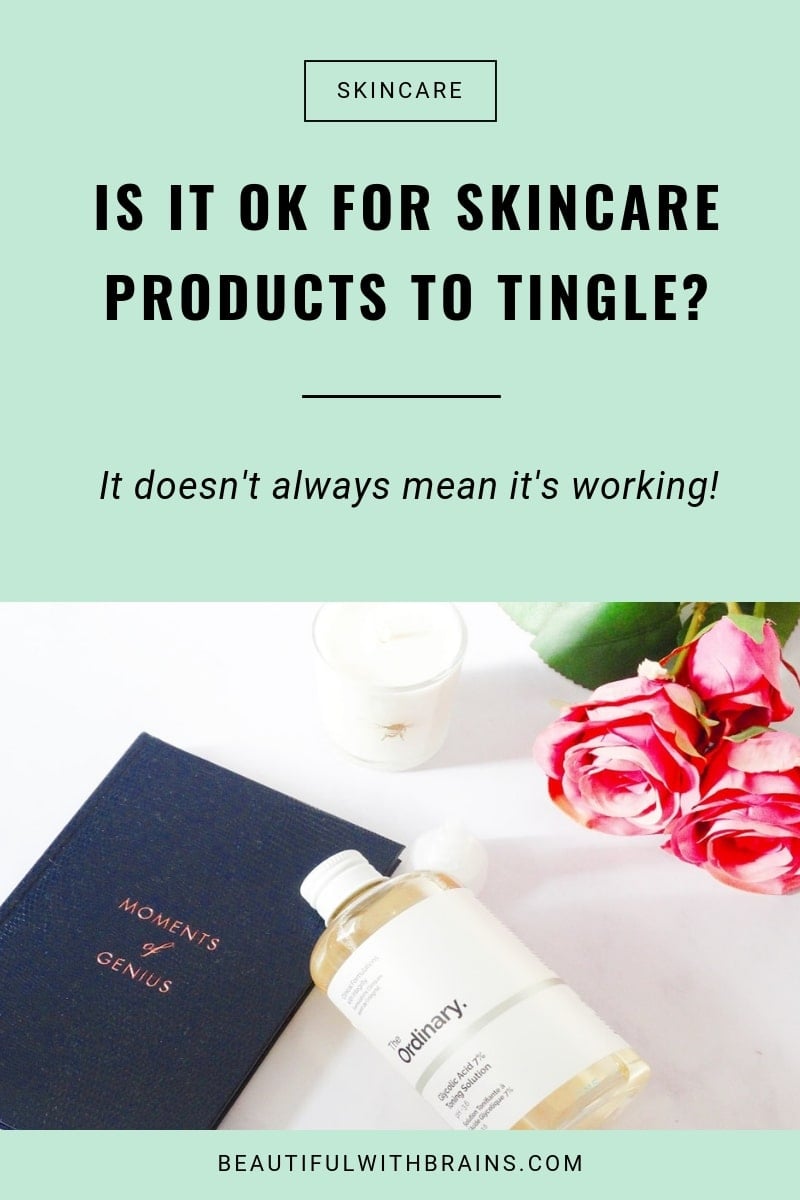The biggest skincare question that’s doing the rounds now: is it ok for skincare products to tingle? Imagine this scenario:
Uh oh, there it goes again. Your’s skin tingling. Just after applying that new serum. Is it meant to do that? It must be, right? If it tingles, it works. Beauty magazines have repeated that a dozen times. And you saw that influencer say the same thing in her “nighttime GRWM” like it was gospel.
But then… Why is my skin turning redder? What’s going on? Is this normal?! Not really. Sometimes the tingling is a sign that the product is working. Other times, it’s a warning you need to get that nasty bugger off your face before it gives you a bad rash. So if you’re asking if it’s ok for skincare products to tingle, and how to know when the tingle is a sign of incoming glow or income irritation, read on:
Tingling, Stinging, Burning: What’s Normal and What’s Not?
Why does tingling happen in the first place? The skin on your face is full of tiny nerve endings, and they sit really close to the surface. When strong ingredients hit your skin, here’s what’s happening underneath:
- Your nerve fibers are reacting to the ingredient.
- Your blood vessels may dilate slightly, creating that warm or flushed feeling.
- Your immune system might even kick in a little, especially if your barrier is compromised.
This is the inflammation process. Now, inflammation isn’t always bad. It’s part of how your body heals and adapts. But when it comes to skincare, too much of it = irritation, and repeated irritation = damaged skin barrier. Not cute.
Sometimes a little tingle is fine. Other times, it’s your skin begging for a break. So let’s decode what each sensation really means. Think of it like a 3-level system:
Level 1. Tingle = Totally Fine
This is the baby stage of sensation. It feels like a light fizz or a whisper of pins and needles that disappears fast-usually under a minute. No heat, no redness, just a little “hey, I’m here” from the product. This is common with exfoliating acids or active serums, especially if you’ve got slightly sensitive skin or your barrier’s feeling fragile that day. If it’s short and sweet, you’re good.
Level 2. Stingle = Keep an Eye On It
Yes, “stingle” is made up (I think Renee Rouleau used it first), but it fits. This is when the tingle starts to overstay its welcome. It’s a little more intense, maybe lasts up to two minutes, and your skin might look slightly pink or feel warm to the touch. This often happens if you’re using a stronger product or layering actives. For most people, it’s still within the safe zone. But if it keeps happening or starts lasting longer, it’s a clue that your skin might be getting irritated. If your skin feels warm and flushed but recovers quickly, you’re probably fine. But take it as a warning shot.
Level 3. Sting/Burn = Nope. Hard Pass.
This one’s not subtle. It’s sharp. It’s hot. It doesn’t fade. Your skin feels like it’s throwing a tantrum – and it probably is. This kind of reaction usually comes with redness, heat, and that creeping sense of “I’ve made a mistake.” If it keeps going for more than a minute or feels worse by the second, rinse your face. Don’t try to push through. Nothing good is coming from that. The only time this kind of burn is expected is during a pro treatment like a chemical peel. In that case, you’re in a controlled setting with someone watching your skin like a hawk – and if the person does its job well, when this reaction happens, she’ll starting removing the peel from your skin pronto.
Related: 5 Skincare Treatments That Can Ruin Skin (If Abused)

When Is It OK For Skincare Products To Tingle?
Sometimes, the tingling’s normal. If any of these ingredients are in your lotions and potions – and the tingling is annoying rather than painful, you’re good:
Chemical Exfoliants
That’s the case with chemical exfoliants (don’t let the “chemical” name fool you, these exfoliants rock – safely!). Chemical exfoliants can be divided into two big families.
Alpha hydroxy acids include:
- Glycolic acid
- Lactic acid
- Malic acid
- Tartaric acid
Beta Hydroxy Acid includes:
All these acids can make your skin tingle slightly when you apply them. It feels like tiny needles gently pricking your skin. Sometimes, there’s some heat too. But the tingling only lasts for a few seconds.If it feels like your skin’s being gently poked by invisible elves with feather-sized pitchforks—that’s the vibe. That gentle tingling means the product is penetrating the skin, and there’s nothing to worry about. It’s kinda like your skin going, “Yup, got it. We’re working now.”
By the way, not everyone experiences this tingling when they use these acids. It usually depends on how sensitive your skin is and how high the concentration you’re using is. The higher it is, the more likely it’ll tingle your skin. So if your friend’s over there applying the same acid and feeling nothing while you’re wondering if this tingling is a bit too much, it doesn’t mean the product’s faulty. You might just have the skin of a Disney princess while she’s rocking dragon-hide resilience.
Best Picks:
- Drunk Elephant T.L.C. Framboos Glycolic Night Serum ($90.00): Don’t let the name fool you. This exfoliant has both salicylic acid to unclog pores and glycolic acid to fade away the dark spots pimples sometimes leave behind. Available at Cult Beauty and SpaceNK.
- Paula’s Choice Advanced Smoothing Treatment 10% AHA ($39.00): This super-concentrated exfoliating cocktail contains Glycolic, Lactic, Malic, and Salicylic Acids to smoothen out imperfections, fade away dark spots, and treat acne. Available at Cult Beauty, Dermstore, Paula’s Choice, Selfridges, and SpaceNK.
- The Ordinary Lactic Acid 10% + HA 2% ($8.90): A simple Lactic Acid exfoliant enriched with Hyaluronic Acid to exfoliate and hydrate skin at the same time. Available at Beauty Bay, Boots, Cult Beauty, Sephora, SpaceNK, The Ordinary, and Ulta.
Related: Chemical VS Physical Exfoliation: Which One Is Better?
Enzyme Exfoliants
Not into acids? Enzyme exfoliants are a gentler option for sensitive skin. These come from fruit enzymes like papain (from papaya), bromelain (from pineapple), or pumpkin. They work by breaking down the proteins that hold dead skin cells together, so they lift off more softly – no harsh tingling, no micro-tears.
Most enzyme exfoliants don’t tingle at all. But if your skin barrier is a little fragile or you’re using them with other actives, you might still feel a mild buzz. As long as it fades fast and doesn’t burn, it’s usually fine. They’re a solid option if you want smoother skin but your face throws a tantrum every time you go near glycolic acid.
Vitamin C (L-Ascorbic Acid)
Vitamin C is a popular antioxidant that fights free rascals, brighten skin, and even boosts the sun protection of your sunscreen. But not all forms are created equal. While Vitamin C derivatives don’t cause any problems, the pure type (L-Ascorbic Acid) can feel a little spicy at high concentrations (like 15% or 20%) – especially if your skin’s not used to it or if you’ve layered it over exfoliants.
That slight tingle with Vitamin C? Totally normal. It should calm down quickly and not come with heat or stinging. But if your skin burns or stays red, it’s either too strong for you or your barrier’s not ready for it yet.
Pro tip: If you’re layering Vitamin C after exfoliating, be extra careful. That combo can make your skin more reactive – even if both products are great on their own. For best results, I recommend you use Vitamin C in the morning and exfoliate at night.
Best Picks:
- MaeLove Glow Booster ($27.95): The cheapest Vitamin C serum in this list, it does everything the others do, but it contains a citrus extract that may be irritating for sensitive skin. Available at Maelove.
- Paula’s Choice C15 Booster ($46.75): It’s enriched with Hyaluronic Acid and glycerin to deeply hydrate skin. Available at Cult Beauty, Dermstore, Paula’s Choice, Sephora, and SpaceNK.
- Skinceuticals CE Ferulic ($169.00): The original Vitamin C serum, it costs an arm and a leg, but it works wonders and delivers what it promises. Available at Dermstore and Skinceuticals.
Related: All Forms Of Vitamin C Used In Skincare: Which One Is Right For You?
WARNING! If your skin is very sensitive, the tingling sensation may turn into stinging or burning. If that happens, wash the exfoliant off your face and never use it again. Your skin’s trying to break up with that product and you need to respect its boundaries. Just because a product is safe, it doesn’t mean it won’t cause problem for anyone at all. No glow is worth a chemical heartbreak.
Related: How To Choose The Best Exfoliator For Your Skin Type?

When Is It Not OK For Skincare Products To Tingle?
There are some other things lurking in your cosmetics that can make your skin tingle. They are:
- Camphor
- Menthol
- Mint
- Peppermint
With these, it’s a different story entirely. Their tingling is bad news for the skin. Like a toxic ex, they might feel exciting for a second but leave chaos behind.
These ingredients are counter-irritants. That means they cause local inflammation (that’s the tingling feeling, by the way) to reduce the inflammation in deeper tissues. Basically, they substitute one type of inflammation for another. But inflammation is NEVER good for the skin. It’s one of the main causes of premature aging. So, the less you use these ingredients, the better. If you don’t use them at all, great. It’s not like they’re doing anything important in cosmetics, anyway.
Want to know what ingredients you really need to avoid in your skincare products? Sign up to the newsletter below to receive the “Skincare Ingredients To Avoid” cheatsheet:
Can Anything Else Make Your Skin Tingle?
It’s very rare that other ingredients make skin tingle. But if you have sensitive skin, your skin barrier is severely compromised, or are allergic to something, the truth is any product can give you a tingle or a stingle… or worse.
If the tingling sensation is very, very gentle, then it is probably ok. But if the tingling:
- Increases by the minute
- Turns into stinging or burning
- Lasts more than a minute
- Goes hand in hand with redness or peeling
then throw the product away. Your skin obviously doesn’t like what you’re using. And, if your skin barrier is severely compromise, go back to the most basic routine (cleanser, moisturise, sunscreen) until it’s back to normal.
Stop wasting your time and money on stuff that doesn’t work. Click on the image below to download “Skincare That Works” and finally get your best skin day – every day.

My Acid Serum Used to Sting. Now It Doesn’t. Is It Still Working?
This freaks a lot of people out. You start using an exfoliating acid, it tingles or stings a little at first, and then… nothing. No fizz. No burn. It just sinks in quietly. And suddenly you’re like, Wait-has my skin built immunity? Do I need to upgrade to something stronger?
Short answer? No, your serum didn’t stop working. Your skin just got smarter.
When you first start using acids, especially AHAs like glycolic or lactic acid, that tingle is often a sign your skin barrier is adjusting. Exfoliating acids can temporarily increase sensitivity while your skin learns to tolerate them. But here’s the cool part: over time, they actually help strengthen the skin barrier by encouraging cell turnover and supporting lipid production.
So if the sting disappears? That’s a good thing. It means your skin barrier is more resilient, not that the formula stopped doing its job. The real danger comes when you start chasing the sting. That “no pain, no gain” mindset doesn’t work here. Pushing your skin into constant inflammation by jumping to higher percentages too soon – or layering multiple exfoliants – can leave your skin raw, reactive, or straight-up wrecked.
The goal isn’t to feel it working. The goal is for it to work without drama. No tingling = your skin’s doing just fine. Keep going. No need to escalate.
The Verdict: Is It Ok For Skincare Products To Tingle?
If an exfoliant make your skin slightly tingle, it’s probably ok. But if anything else tingles or stings, throw the product away. It’s not suitable for you.
